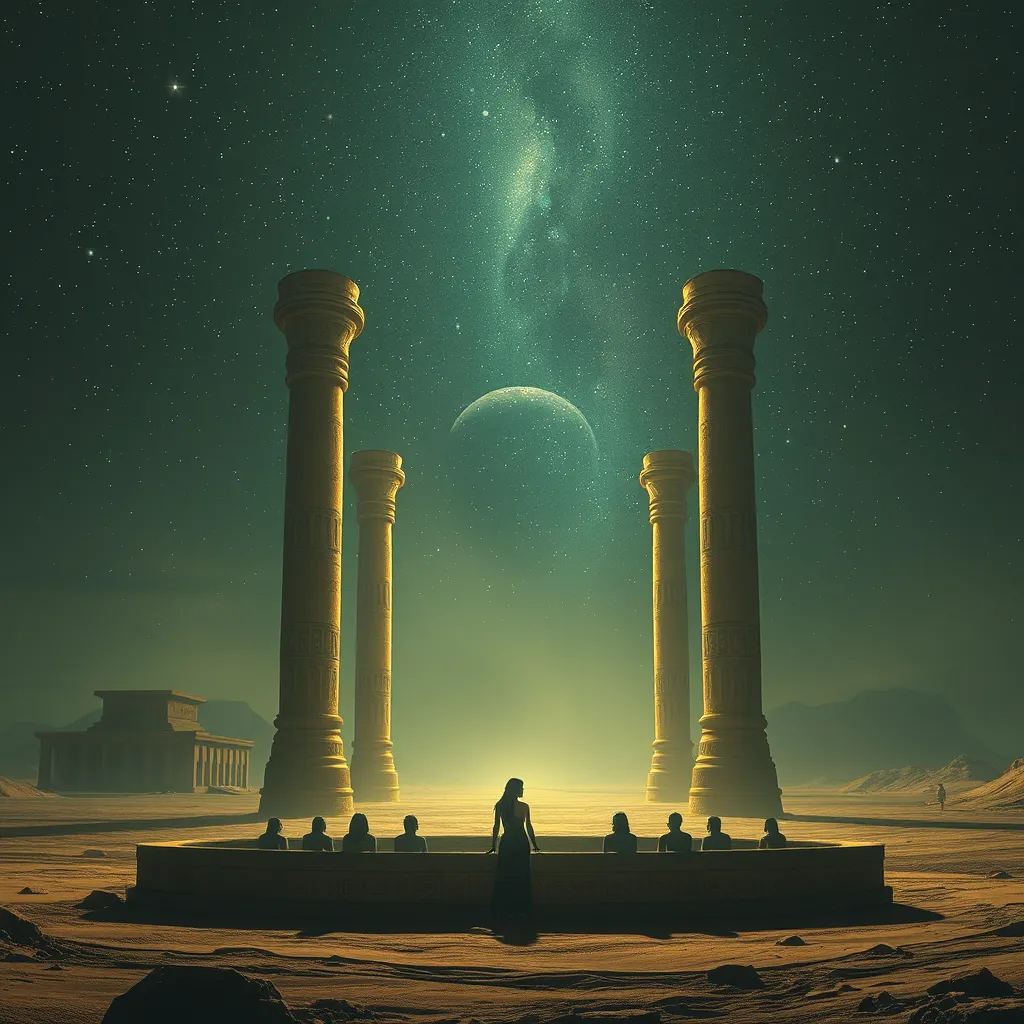The Duat: A Realm of Spiritual Journeys
I. Introduction to the Duat
The Duat, a significant element of ancient Egyptian mythology, represents the realm of the dead and the afterlife. It is not merely a place of rest but a complex landscape embodying the spiritual journey of the soul post-mortem. In ancient Egyptian culture, the concept of the afterlife was vital as it dictated how individuals lived their lives, with the belief that one’s actions directly influenced their fate beyond death.
This article aims to explore the multifaceted nature of the Duat, highlighting its historical context, geographical descriptions, the journey through this realm, and its enduring impact on modern culture.
II. Historical Context of the Duat
The origins of the Duat can be traced back to ancient texts and artifacts, notably the Pyramid Texts and the Book of the Dead, which detail the beliefs and practices concerning the afterlife. These texts provide insights into how the Egyptians envisioned the journey of the deceased through the Duat.
Over centuries, beliefs surrounding the Duat evolved significantly. Initially, it was a shadowy underworld, but as Egyptian religion developed, it became a more structured realm with defined paths, gates, and various deities governing its aspects. Key deities associated with the Duat include Osiris, the god of the afterlife, and Anubis, the god of mummification and the protector of graves, both of whom played crucial roles in the spiritual journey of the departed.
III. The Geography of the Duat
The landscape of the Duat is often depicted as a vast and intricate realm. It includes a variety of symbolic features that reflect the Egyptians’ understanding of life, death, and rebirth. The Duat is characterized by:
- Rivers: Often seen as obstacles to overcome, these rivers symbolize the challenges of the afterlife.
- Fields of Aaru: The ideal afterlife destination, a paradise where the deceased could live in peace.
- Gates: Numerous gates that the soul must pass through, each guarded by deities and requiring specific knowledge to enter.
In Egyptian art and literature, the Duat is richly represented, showcasing its complexity and the various stages souls must navigate. The intricate hieroglyphs and vivid depictions found in tombs and papyri serve as both a guide and a warning for the deceased on their journey.
IV. The Journey Through the Duat
The journey through the Duat begins with the process of dying, where the soul, often depicted as a bird, leaves the body. This transition is critical, as it marks the separation of the physical and spiritual selves. Key stages of the spiritual journey include:
- Crossing the Threshold: The soul must pass through the entrance of the Duat, often represented by a cavern or a gate.
- Facing Challenges: During the journey, the soul encounters various trials and entities that test their worthiness.
- Judgment: The most crucial stage, where the heart of the deceased is weighed against the feather of Ma’at, the goddess of truth and justice. A balanced scale indicates a worthy soul, while a heavier heart signifies failure.
If the soul passes judgment, it is granted passage to the Fields of Aaru, where eternal bliss awaits. Conversely, failure results in the soul facing annihilation or eternal torment.
V. Deities and Guides in the Duat
Within the Duat, various deities play essential roles in guiding and protecting souls. Major deities include:
- Osiris: Ruler of the Duat, overseeing the judgment of souls and the afterlife.
- Anubis: The jackal-headed god who prepares the deceased for their journey and ensures their safe passage.
- Thoth: The god of wisdom and writing, often depicted as a scribe recording the results of the judgment.
Guides and protective spirits accompany souls through the Duat, offering assistance and safeguarding against malevolent forces. Rituals and prayers were performed by the living to invoke these deities’ protection, ensuring a smooth passage for the deceased.
VI. Symbolism and Themes in the Duat
The Duat is rich with symbols that convey deep meanings related to death and rebirth. Key symbols include:
- The Scarab: Representing transformation and resurrection, this beetle is a powerful symbol of renewal.
- The Feather of Ma’at: A symbol of truth and justice, central to the judgment process.
Prominent themes in the Duat include:
- Resurrection: The belief that death is not the end but a transition to a new life.
- Transformation: The soul’s journey through various trials leads to spiritual evolution.
- Immortality: The enduring belief in life after death and the continuation of the soul’s journey.
The Duat embodies human fears and hopes regarding death, reflecting both anxiety about the unknown and the desire for continuity beyond life.
VII. The Duat in Modern Culture
The influence of the Duat extends into contemporary literature and art, serving as a source of inspiration for various creators. Its themes resonate in:
- Literature: Books and novels often reference the Duat, exploring themes of mortality and the afterlife.
- Art: Artists continue to depict the Duat, reimagining its landscapes and deities in modern contexts.
- Popular Media: Films and television shows have adapted elements of the Duat, bringing ancient myths to new audiences.
Additionally, the Duat remains relevant in modern spiritual practices, where individuals seek to understand their own spiritual journeys in light of ancient beliefs.
VIII. Conclusion
In conclusion, the Duat holds significant importance in both ancient Egyptian culture and modern interpretations of the afterlife. Its rich symbolism, complex geography, and the spiritual journey it represents continue to fascinate people today. The Duat serves as a powerful reminder of humanity’s enduring curiosity about what lies beyond death and the spiritual paths we traverse in search of meaning.
As we reflect on the Duat and its implications, we are invited to consider our own spiritual journeys and the ways in which we confront the mysteries of life, death, and what may lie beyond.




